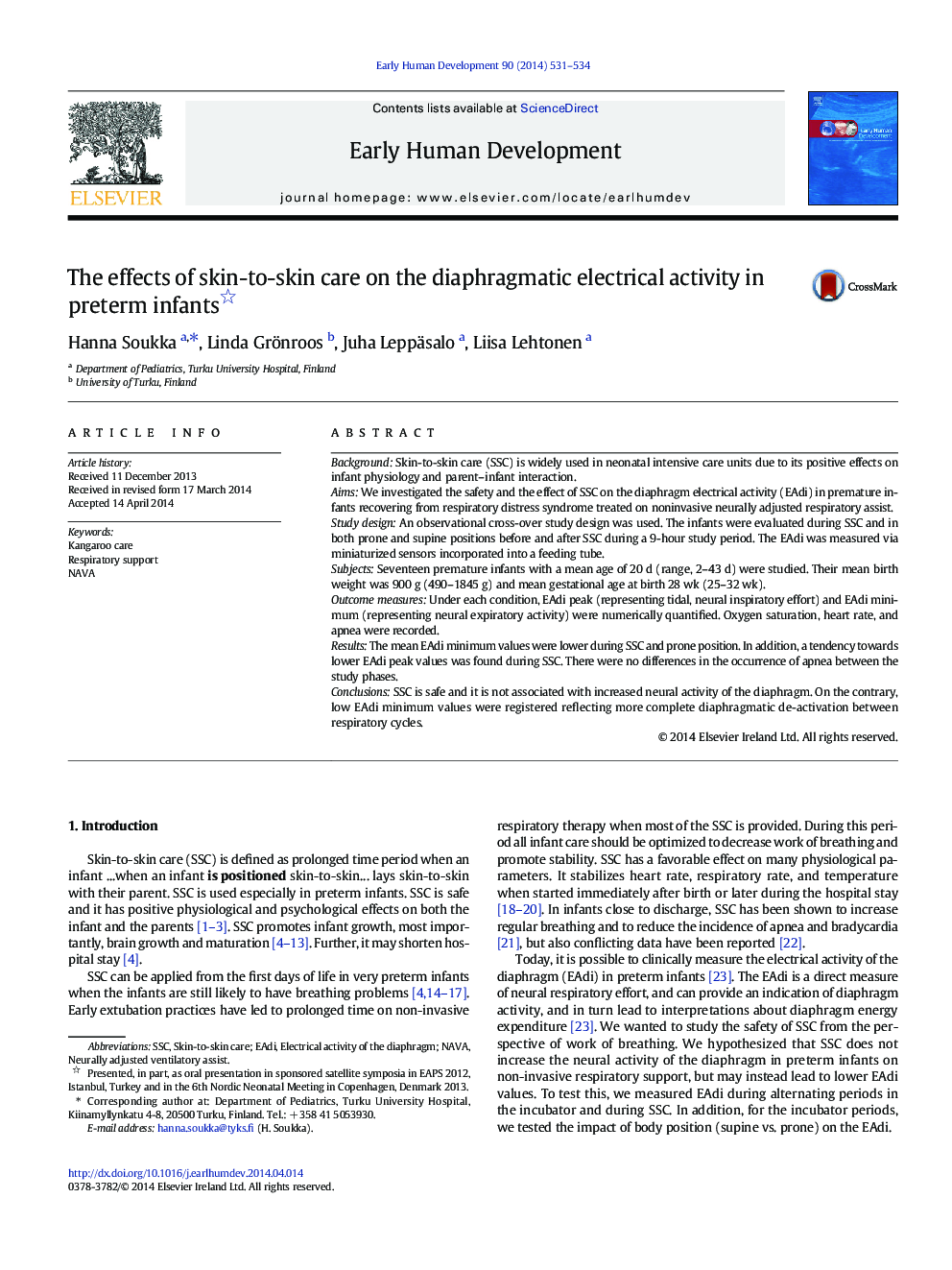| Article ID | Journal | Published Year | Pages | File Type |
|---|---|---|---|---|
| 3916520 | Early Human Development | 2014 | 4 Pages |
BackgroundSkin-to-skin care (SSC) is widely used in neonatal intensive care units due to its positive effects on infant physiology and parent–infant interaction.AimsWe investigated the safety and the effect of SSC on the diaphragm electrical activity (EAdi) in premature infants recovering from respiratory distress syndrome treated on noninvasive neurally adjusted respiratory assist.Study designAn observational cross-over study design was used. The infants were evaluated during SSC and in both prone and supine positions before and after SSC during a 9-hour study period. The EAdi was measured via miniaturized sensors incorporated into a feeding tube.SubjectsSeventeen premature infants with a mean age of 20 d (range, 2–43 d) were studied. Their mean birth weight was 900 g (490–1845 g) and mean gestational age at birth 28 wk (25–32 wk).Outcome measuresUnder each condition, EAdi peak (representing tidal, neural inspiratory effort) and EAdi minimum (representing neural expiratory activity) were numerically quantified. Oxygen saturation, heart rate, and apnea were recorded.ResultsThe mean EAdi minimum values were lower during SSC and prone position. In addition, a tendency towards lower EAdi peak values was found during SSC. There were no differences in the occurrence of apnea between the study phases.ConclusionsSSC is safe and it is not associated with increased neural activity of the diaphragm. On the contrary, low EAdi minimum values were registered reflecting more complete diaphragmatic de-activation between respiratory cycles.
